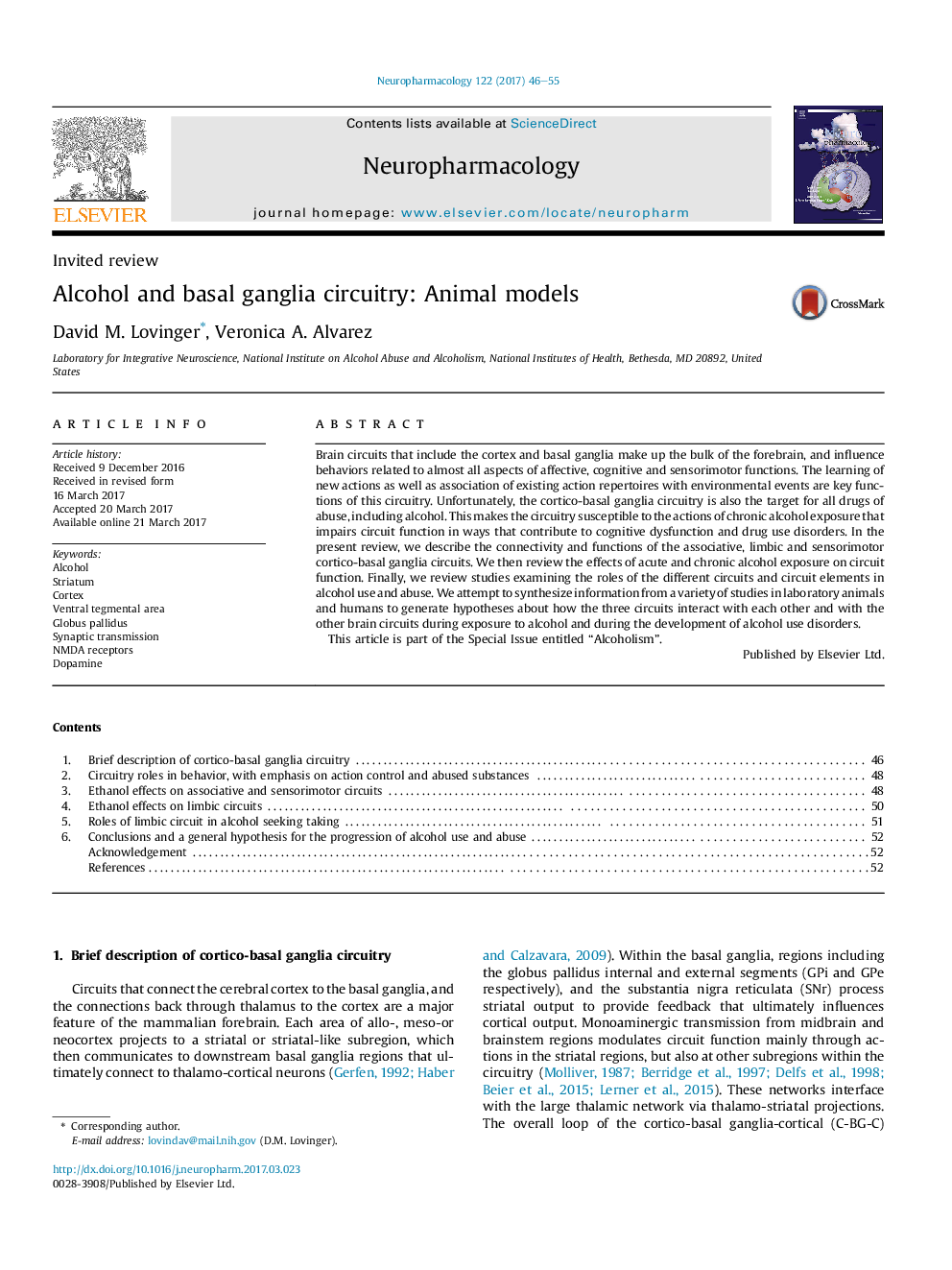| کد مقاله | کد نشریه | سال انتشار | مقاله انگلیسی | نسخه تمام متن |
|---|---|---|---|---|
| 5548844 | 1556595 | 2017 | 10 صفحه PDF | دانلود رایگان |
- Brain circuitry that includes the cortex and basal ganglia (C-BG-C circuits) controls action learning and performance.
- This circuitry can be subdivided into 3 parallel C-BG-C loops, the associative, limbic and sensorimotor sub-circuits.
- Acute and chronic ethanol exposure alters the function of all 3 circuits through actions on many molecular targets.
- The 3 circuits have important roles in ethanol reward, cue-induced drinking, goal-directed and habitual ethanol seeking.
- Chronic ethanol exposure fosters habit learning, habitual alcohol seeking and increased environmental control of drinking.
Brain circuits that include the cortex and basal ganglia make up the bulk of the forebrain, and influence behaviors related to almost all aspects of affective, cognitive and sensorimotor functions. The learning of new actions as well as association of existing action repertoires with environmental events are key functions of this circuitry. Unfortunately, the cortico-basal ganglia circuitry is also the target for all drugs of abuse, including alcohol. This makes the circuitry susceptible to the actions of chronic alcohol exposure that impairs circuit function in ways that contribute to cognitive dysfunction and drug use disorders. In the present review, we describe the connectivity and functions of the associative, limbic and sensorimotor cortico-basal ganglia circuits. We then review the effects of acute and chronic alcohol exposure on circuit function. Finally, we review studies examining the roles of the different circuits and circuit elements in alcohol use and abuse. We attempt to synthesize information from a variety of studies in laboratory animals and humans to generate hypotheses about how the three circuits interact with each other and with the other brain circuits during exposure to alcohol and during the development of alcohol use disorders.This article is part of the Special Issue entitled “Alcoholism”.
Journal: Neuropharmacology - Volume 122, 1 August 2017, Pages 46-55
